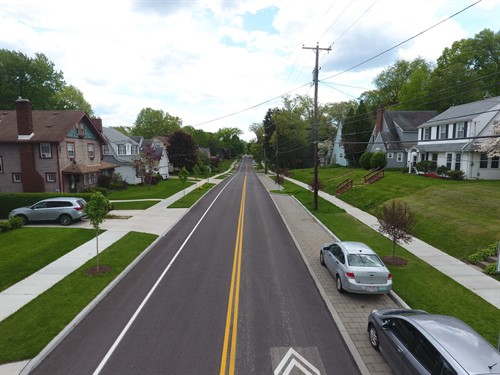 Traditional roads and streets were built for one form of transportation – motor vehicles. Complete streets change this idea to allow for multimodal transportation and make it safe for every type of traveler. With the implementation of complete streets, there is a more inclusive environment for pedestrians, bicyclists, and those who use transit regularly. This allows for better accessibility to residences, schools, parks, offices, grocery stores, and so much more to create economic growth for the community. These streets also encourage a healthier lifestyle by creating a space for safe walking and biking. If more people choose to bike or walk instead of drive, there will be a decreased amount of car emissions, which in turn improves air quality in the city.
Traditional roads and streets were built for one form of transportation – motor vehicles. Complete streets change this idea to allow for multimodal transportation and make it safe for every type of traveler. With the implementation of complete streets, there is a more inclusive environment for pedestrians, bicyclists, and those who use transit regularly. This allows for better accessibility to residences, schools, parks, offices, grocery stores, and so much more to create economic growth for the community. These streets also encourage a healthier lifestyle by creating a space for safe walking and biking. If more people choose to bike or walk instead of drive, there will be a decreased amount of car emissions, which in turn improves air quality in the city.
Increased transportation choices, economic growth, and increased safety for all users are only a few of the benefits to complete streets. More include improved health from more walking and biking and greenhouse gas reduction. However, there are also fringe benefits of complete streets of reducing traffic, slowing traffic down in neighborhoods, and creating a greater connection in the community. New connections are formed in the community by just having more people walking or biking together.
In the case of Aqueduct Street, there were even more added benefits in the design. With permeable pavers, the use of native greens on the devil strips, and sections of rocks at the end of the street, a natural form of treating water is created. Rainwater that would normally be traveling to the sewer system and the Water Reclamation Facility, is now traveling through these natural filters. Green infrastructure including bioretention, rain gardens, and underground storage chambers are also implemented on Aqueduct Street. Keeping this water out of the sewer system will help reduce overflows and can help mitigate flood risk by slowing down water in the area. Green infrastructure also has benefits of improving air quality with helping to reduce air temperatures and removing air pollutants through the vegetation. Finally, green infrastructure allows new habitats for wildlife and reduction in erosion and sedimentation.
By: Elizabeth Holston
